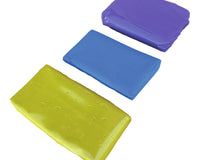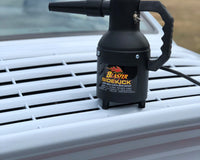Extreme heat presents unique challenges for car detailing. High temperatures can cause cleaning products, waxes, and sealants to flash dry, leaving streaks, residue or even etching into paint. When water evaporates almost instantly, it can leave mineral deposits behind, resulting in unsightly water spots. Moreover, working under direct sunlight can bake on soaps and sealants before they’re properly buffed off—creating persistent smears that are tough to remove. Protecting your paintwork from these adverse effects requires intentional timing, product choice and technique.
Beyond surface damage, heat can accelerate UV-induced oxidation of the clear coat, leading to fading and dullness over time. Even a freshly waxed car can lose its shine rapidly if exposed to intense sun without proper protection. Paint can also suffer micro-marring when wash mitts or towels drag dried contaminants across a sun-heated panel. This makes detailing in heat about safeguarding the integrity of the finish—not just removing dirt.
Understanding the science behind how heat affects paint and coatings will help you detail smarter. When detailing in high temperatures, you must consider product flash, surface temperature, water spot risk and UV damage. By adopting heat-conscious strategies and using heat-resistant products, you can maintain shine without risking permanent paint degradation.
Choosing the Right Time and Location for Detailing
Work During Cooler Periods of the Day
The optimal time to detail a car in extreme heat is either early in the morning or late in the evening. Temperatures during these times are lower, surfaces are cooler, and products dry at a slower, more controlled pace. Washing or waxing a car in the middle of the day when the sun is intense dramatically increases the likelihood of hazing, streaks, or flash spots. Car detailing experts consistently emphasise that panel-by-panel work during cooler periods yields far better results than trying to beat the sun.
Always Opt for Shade or Covered Areas
Shaded locations such as garages, carports or under canopies offer superior control when detailing in hot conditions. Even a large tarp or canopy can prevent paint from becoming too hot to touch and allow you more dwell time for cleaning products. Natural shade is ideal—but avoid parking under trees, as sap, leaves or bird droppings can cause damage if not promptly removed. Portable canopy setups are often used by mobile detailers to maintain controlled environments despite ambient heat.
Cool the Surface Before You Begin
Even when working in shade, panels of a vehicle can remain hot from prior sun exposure. Always start by rinsing the surface with cool water to lower its temperature before applying any product. Letting the car cool naturally for a few minutes can make a big difference. A cool surface helps maintain product lubricity and prevents premature flash drying. Failing to do this can result in products bonding to paint too quickly, making them tough to remove cleanly.
Washing Techniques That Protect Paint Under the Sun
Pre-Rinse Thoroughly Before Washing
Start every extreme heat detailing session with a thorough rinse to remove loose dust, pollen and road grime. Use a hose with moderate pressure or a gentle nozzle setting on your pressure washer. This prevents larger particles from causing scratches when you begin washing with a mitt or sponge. Removing loose contaminants early minimises the risk of marring the paint when you’re working in hot conditions.
Use pH-Neutral, Heat-Resistant Shampoo
Choose a pH-neutral car shampoo specifically formulated for hot-weather use. These formulations contain surfactants that retain lubricity longer, even as the temperature rises. Avoid household detergents or aggressive shampoos that dry out too quickly or strip existing wax or coatings. The goal is to safely lift dirt while preserving the paint’s protective barrier.
Wash in Small Sections and Rinse Immediately
Divide the car into manageable sections—such as roof, bonnet, doors, quarter panels—and complete washing, rinsing and drying of each section before moving on. Working on one area at a time prevents soap residue or water from splashing onto hot panels that haven’t been rinsed yet. This method significantly reduces the risk of water spots and ensures every section is dried before it can dry visibly in the sun.
Drying and Protecting Paintwork Effectively
Use High-Quality Microfibre Towels
After rinsing each section, dry immediately using large, soft, absorbent microfibre drying towels. Choose waffle-weave or thick plush microfibres that absorb water quickly and allow you to blot rather than drag across the paint. Dragging can introduce swirl marks—especially if the paint is hot and contaminants are present—so use blotting and gentle patting motions.
Spot-Free Rinse or Deionised Water
If you’re dealing with hard water, or if streaking is a recurring issue, consider a spot-free rinse or final rinse using deionised or distilled water. This removes mineral content that causes water spots, especially crucial when working in high heat. Even small amounts of mineral residue left to bake on can etch into the clear coat and remain visible.
Apply Heat-Resistant Sealants or Waxes
To shield paint from UV exposure and heat oxidation, apply a wax or sealant designed for hot weather conditions. These products include UV inhibitors that reflect sunlight and help prevent premature fading. Always apply under shade and buff thoroughly while panels remain cool. Avoid applying thick layers and allow each layer to cure according to the product’s instructions before exposure to sun, which preserves both appearance and protection.
Interior Protection and UV Shielding
Use Sun Shades and Tints Strategically
Parking in direct sunlight can cause the interior to reach high temperatures, resulting in fading and cracking of dashboard, steering wheel and trim. Use high-quality sun shades to block UV rays and heat buildup through the windscreen. Tinted windows (within legal limits) also reduce interior heat exposure. These measures preserve not only the interior surfaces but also reduce strain on air conditioning systems when entering the vehicle.
Apply UV Protectants to Trim and Upholstery
Heat damage isn’t limited to the exterior. Plastic dashboard trim, vinyl surfaces and leather seats can degrade under strong sunlight. Use interior UV protectant sprays—such as those containing UV blockers and conditioners—to maintain suppleness and prevent fading. For leather interiors, follow with a leather balm that condition and protects against cracking.
Ventilate the Cabin During Cleaning
When cleaning inside your car, especially with chemical cleaners, ensure all doors and windows are open to allow ventilation. Heat traps chemical vapours inside, which may cause smearing or affect interior trim finishes. As you clean, avoid using the air conditioning system heavily until after airing out the cabin, to reduce heat-induced chemical reactions on surfaces.

Tyres, Wheels and Undercarriage Concerns in Heat
Clean and Treat Tyres with Care
High temperatures can accelerate tyre aging, especially if left in the sun. Clean tyres using a dedicated tyre cleaner and a stiff brush, then apply a water‑based tyre dressings that won’t sling or dry too quickly. Avoid silicone-based products which may degrade in high heat. These water-based formats offer protection without attracting dust or creating residue on painted surfaces.
Detail Wheels and Brake Components Regularly
Brake dust and grime can bake onto wheel faces in heat, making them tougher to clean. Use a non-acidic wheel cleaner and soft brushes, rinsing each wheel thoroughly section by section. Avoid cleaning wheels when hot. Allow them to cool first to prevent cleaners from evaporating too fast and leaving residue that can etch into alloys.
Protect the Undercarriage
Extreme temperatures often coincide with dry road dust or road salt (depending on region). Rinse or use a dedicated undercarriage cleaner to protect exposed components. High-pressure sprays should be used with caution under the vehicle—avoid targeting any electrical modules or suspension components closely.
Advanced Tips for Minimising Sun and Heat Impact
Use Canopy or Canopy Blanket for Shade When Detailing
Many mobile detailers use canopy blankets to cover the vehicle quickly during paint correction or polishing steps. This prevents sun from hitting the finish and allows products to remain workable longer. Even a light reflective tarp that shields the car without touching the paint offers major benefits.
Hydrate Tools Regularly
Detailing tools like wash mitts and applicator pads should be occasionally spritzed with water or quick detailer to keep them cool and lubricated. This prevents them from becoming abrasive when they dry out or heat up in intense sun.
Check Paint Temperature Often
Simply touch the vehicle’s panel before applying polish or wax. If it’s too hot to touch comfortably, wait until it cools. High heat alters product behaviour and reduces effectiveness. Patience in waiting for the right temperature translates into better outcomes.
Final Thoughts and Best Practice Summary
Detailing your car in extreme heat demands careful planning, specific products, and sectional techniques. By choosing ideal times of day to work, using shade or canopies, staying hydrated personally and tool-wise, and applying heat-resistant shampoos and sealants, you can avoid damaging your car’s paint and interior surfaces. Regularly addressing tyre, wheel and undercarriage maintenance ensures every part of your vehicle remains protected from high-temperature stress.
While performing a detailing session in the cooler hours of early morning or late evening may require minor adjustments to your routine, the benefits are clear: fewer water spots, reduced swirl marks, better product performance and sustained gloss.




